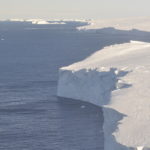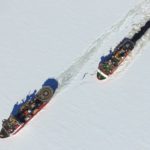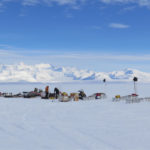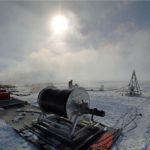THOR is a ship-based and ice-based project that will examine sedimentary record both offshore from the glacier and beneath the ice shelf, together with glacial landforms on the sea bed, to reconstruct past changes in ocean conditions and the glaciers response to these changes.
Data collection will be split over two research cruises combining marine geophysical surveying and geological sampling, and sediment cores will be collected beneath the ice sheet via access holes made by hot water drilling. The first cruise will focus on surveying the seafloor in the region and obtaining a set of sediment cores.
The second cruise will complete the survey coverage, and seismic reflection profiles will be collected to reveal the three dimensional form of landforms and the distribution of sediments on the part of the continental shelf that the glacier has retreated from. The presence of sediments at the base of a glacier have a large effect on its flow, and any sediments on ‘pinning points’ that the ice shelf is in contact with affect the coupling and stability of the ice shelf. The second cruise will also collect sediment cores targeted on the basis of the new survey data.
At present, Circumpolar Deep Water (CDW) underneath the ice shelf is the main driver of glacier retreat in the Amundsen Sea Embayment, where the Thwaites Glacier is located. Understanding the history of changes in environmental conditions, particularly the arrival of warm CDW, and the glacier’s response to these changes, is a key to understanding how the Thwaites Glacier may behave in the future.
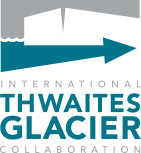
THOR will create detailed records of the behaviour of Thwaites Glacier in response to past environmental changes.
There are 4 main objectives:
- To understand the pathways through which warm water can reach the glacier margin. This involves mapping the seafloor offshore from the ice shelf.
- To obtain and examine sediment cores beneath and in front of the ice shelf which will provide records of environmental change such as changes in temperature and ocean currents.
- Improving the knowledge of processes leading to the collapse/retreat of the Thwaites Glacier
- To determine the history of past changes in the glacier’s behaviour
13 November, 2023
Antarctica Live Lessons, a new and exciting learning resource, launches today (13 November). Aimed at engaging and inspiring the imaginations of young learners, the platform introduces an array of live, …
28 January, 2020
Teams from the US and UK have successfully completed scientific fieldwork in one of the most remote and hostile areas of West Antarctica – coinciding with the 200th anniversary of …
14 January, 2019
The British Antractic Survey’s vessel RRS Ernest Shackleton teamed up with the Royal Navy survey ship HMS Protector to help scientists begin a five-year mission to understand how West Antarctica …
19 November, 2018
A team of UK and U.S. polar scientists are about to embark on one of the largest joint Antarctic missions for more than 70 years. It’s the first field season …
Accessing subglacial environments


